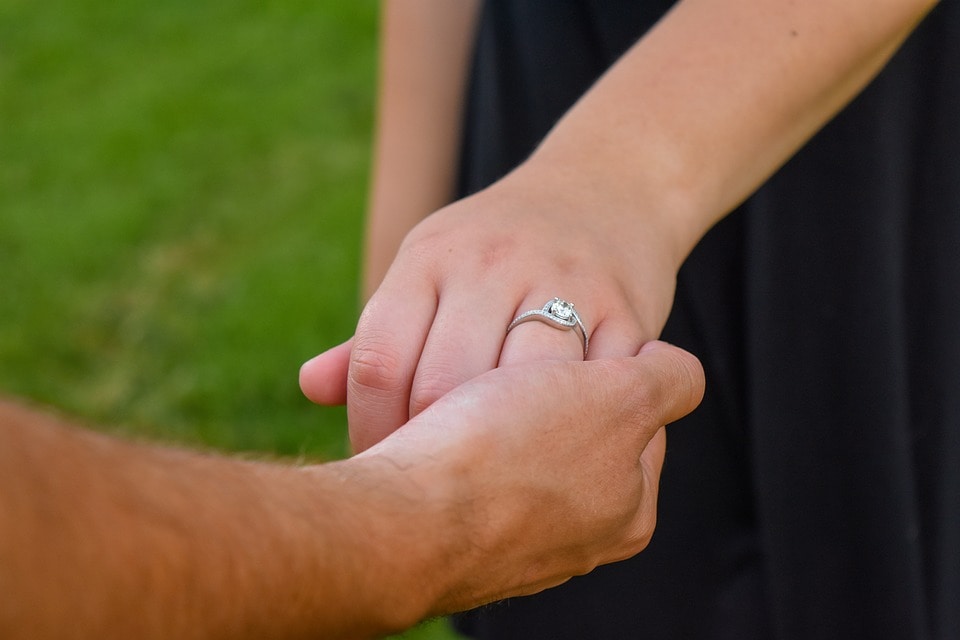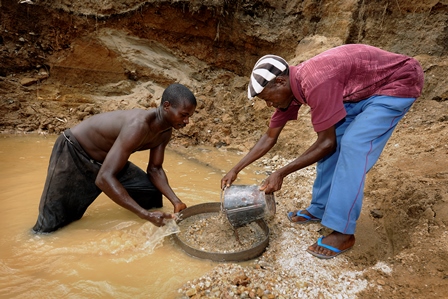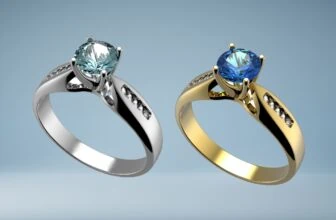
Table of Contents
It’s a sad reality of the diamond industry that for a lot of people around the globe the word “diamond” is still associated with blood, war, and conflict. And it’s even sadder that this is not an unjustified association. Whether all you know on this subject stems from the “Blood Diamond” Leonardo DiCaprio movie or you’ve actually researched the topic before, diamonds and war have a long, complicated, and intricate history.
Fortunately, a lot has been done in the past decade and a half to remedy that, and blood or conflict diamonds today officially amount to about 1% of all diamonds worldwide. Unfortunately, even that 1% is still a lot and not all of the other 99% are exactly “bloodless” yet.
Let’s explore what blood diamonds are all about. In this article, the terms blood diamonds and conflict diamonds will be used interchangeably.
What Are Blood/Conflict Diamonds?
A blood diamond has a few different definitions. It is at once a diamond that has been mined using forced, or slave, labor as well as a diamond mined in conflict zones and used to fund insurgencies. It’s also used to refer to a diamond whose purchase will fund further unwilling labor and wars and conflicts.
Essentially, when buying a blood diamond, you’re not just buying a product that’s been created to perpetuate human misery – you’re actively funding even more future human suffering. However, most people don’t even know they’re buying a blood diamond and this is where the trouble is.
History of Conflict Diamonds

The history of forced human labor in the diamond industry is long and difficult to swallow. Whether in Africa, Asia, South America or in Eastern Europe, or Russia, diamond mining has rarely been a, shall we say, “happy” profession.
When talking about conflict diamonds, however, we mean something much more particular – diamonds that have been used to fund wars, conflicts, and civil rights abuses. The term is mostly related to several African countries, namely Angola, Liberia, the Democratic Republic of Congo, and Sierra Leone. It’s in these countries that illegal diamond trade had been used to supply warlords and rebels with weapons and to fuel their wars.
In Sierra Leone, for example, the devastating civil war in question lasted from 1991 to 2000 and took the lives of 75,000 people while forcing another 500,000 to become refugees. In Liberia, which is a neighbor to Sierra Leone, a similar internal conflict lasted from 1989 to 2003. These wars were partly funded by diamond mining.
What Has Been Done to Stop the Trade of Conflict Diamonds?
The first steps to end the trade of blood diamonds were taken by the United Nations in 1998. That’s when the UN discovered (or acknowledged) the fact that blood diamonds have been used to fuel military conflicts in Africa. Two years later, in 2000, an official meeting of the South African diamond-producing countries was conducted. The meeting took place in Kimberley, South Africa. This meeting started what’s called “The Kimberley Process”.

The World Diamond Council officially banned the trade of conflict diamonds from South African countries in 2003. This was done through the Kimberley Process Certification Scheme (KPCS). The KPCS essentially acts as an official certificate that proves the origin of every single stone and guarantees that it isn’t coming from or funding a military conflict. The KPCS was approved by the UN on March 13, 2002, and was accepted by most diamond-producing countries in 2003. Several other countries joined in 2005-2007 (including Indonesia, Bangladesh, Lebanon, Liberia, and New Zealand), and another group of countries joined in 2011-2012 (Swaziland, Panama, Kazakhstan, and Cameroon).
The United States, as the largest consumer of diamonds in the world, took a significant role in the process. On January 18, 2001, President Clinton prohibited the import of diamonds into the US from Sierra Leone. On May 21, 2001, President Bush prohibited imports from Liberia as well. As a member of the UN, the United States took part in the establishment of the Kimberley Process and has continued to play a role in the efforts to reduce conflict diamonds worldwide.
The Complicated Truth About Conflict Diamonds Today
We mentioned in the beginning that about 1% of the diamonds in trade today are to be considered “conflict diamonds”. Strictly speaking, that’s correct. There are a few armed conflicts in Africa and worldwide that are known to be funded by the illegal diamond trade. For example, a Forbes article from 2017 shone a light on how a large number of conflict diamonds from the Central African Republic (CAR) have been smuggled out of the country and the money from which has been used to fuel armed conflicts within the nation.
Aside from such cases, however, is a conflict-free diamond really conflict-free?
Some people are speculating that it may be time to establish a differentiation between conflict diamonds and blood diamonds. After all, the fact that the diamond we’re purchasing isn’t funding a civil war shouldn’t distract us from the fact that it’s still funding either an authoritarian regime or is simply supporting a broken mining system that maintains the same disastrous and poverty-stricken status quo that existed before.
Many countries in central Africa are found every year to continue committing human rights violations and run corrupt government systems that exploit the diamond industry for their own gain. So, while we can’t officially call these cases conflict diamonds and while they have found a way past the Kimberley Process, they are certainly not bloodless.
Are Canadian Diamonds Conflict Free?
So far, we’ve discussed the state of conflict diamonds in Africa, but are diamonds mined in Canada any better? There is a thriving Canadian diamond industry with CanadaMark diamonds being highly sought after. The New York Times once called Northern Canada The Conflict-Free Diamond Frontier and that’s a sentiment that’s shared by many.
We’ve all heard about the 4 Cs in the diamond industry – cut, color, clarity, and carat. Today, many vendors add a 5th C for Conflict-free. And some, like Deepak Kumar from Deepak International, like to add a 6th C for Canadians. Diamonds in Canada are mined under the Canadian Diamond Code of Conduct which is carefully enforced by the federal government and ensures that the Kimberley Process’s minimal guidelines are being adhered to as well as other modern ethical and sustainable considerations. However, note that any type of diamond mining will have a significant impact on the environment. While Canadian diamonds don’t fund wars or conflict, they still impact on the environment.
Read our review on Canada Mark diamonds here as we unravel the myths and outline the pros and cons of Canadian diamonds.
How to Buy an Ethical Diamond Today?

With all that being said, it’s clear that the first step to buying ethical diamonds today is ensuring that they have a Kimberley Process Certificate. This will, at the very least, ensure that the money you’re spending isn’t used to directly fund an open military conflict. Almost all official vendors in the Western World today will offer such certificates for their stones and will even advertise their business with them as if it’s an achievement that they are not actively funding genocides and atrocities.
If you want to go a step beyond that, however, and make sure that the diamond you’re purchasing is indeed mined ethically, the best thing to do is to research the country of origin of the said diamond. A diamond from Canada and a diamond from a poorer part of the world will both likely have a Kimberley Process Certificate, but there may differ in terms of how ethically they’ve been mined and the working conditions of the miners.
This is why it’s important to know the mine of origin of your diamond. Always ask this from your retailer, who should be able to point out where your diamond has been sourced from.
Another excellent option is to opt for a lab-created diamond. While still a relatively new concept, lab-created diamonds are increasingly popular as more and more people opt for sustainable options for their jewelry. Read all about lab-created or synthetic diamonds here. You can also check out moissanite, our personal favorite.
Wrapping Up
As we mentioned in the beginning, the question of blood diamonds is a sore subject in the industry but it’s a subject that needs to be addressed. The Kimberley Process represented the first big step in this process, but the fact of the matter is that conflict diamonds still exist. More steps will be needed to eradicate these diamonds from entering the market.









